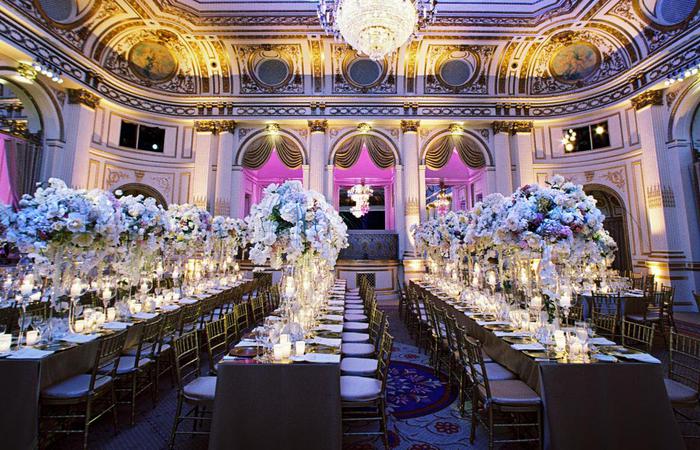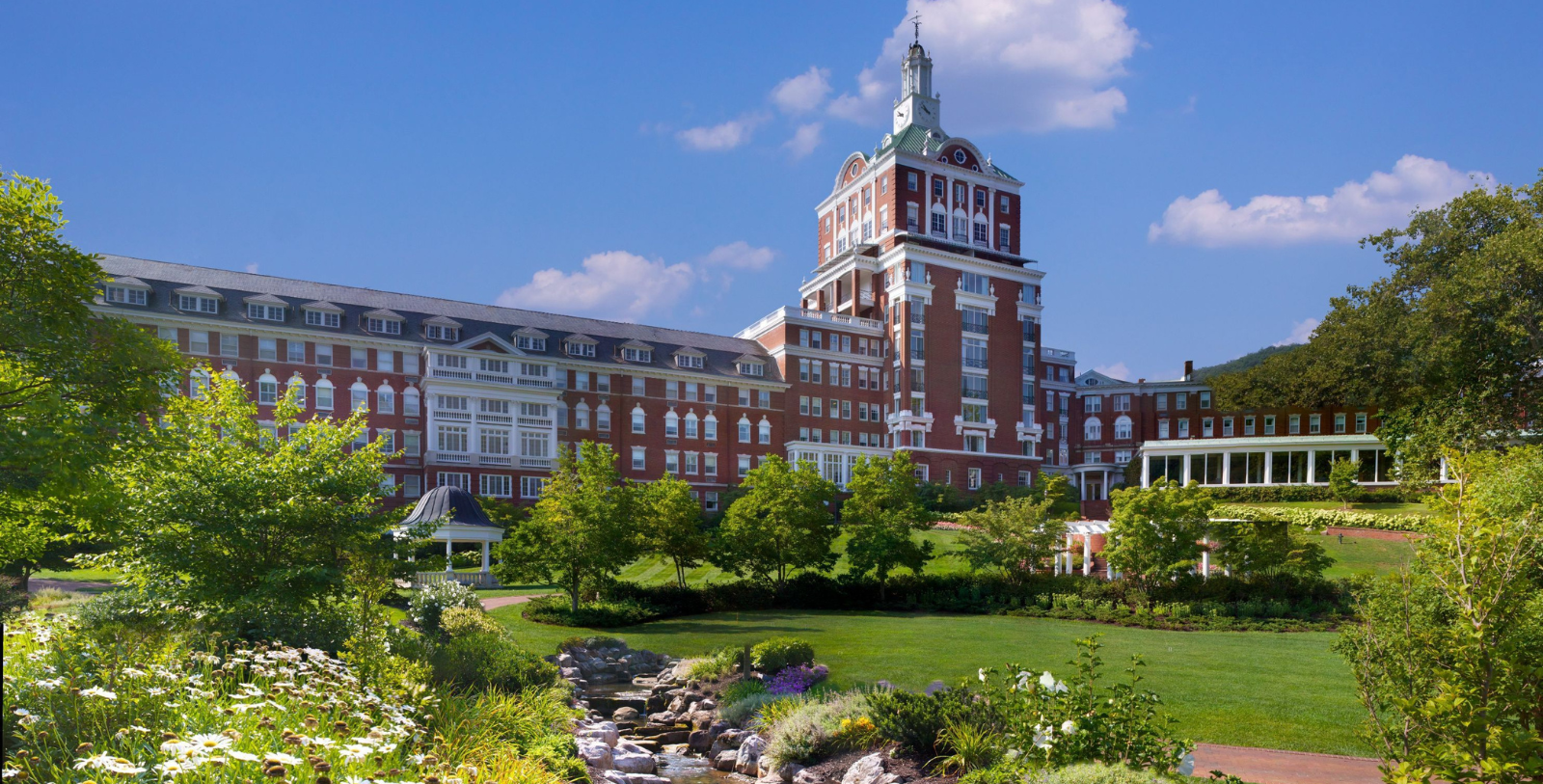Receive for Free - Discover & Explore eNewsletter monthly with advance notice of special offers, packages, and insider savings from 10% - 30% off Best Available Rates at selected hotels.
history
Discover Keswick Hall, which was designed by noted architect Eugene Bradbury to resemble a gorgeous Italian palace.
Located in the rolling foothills of the verdant Blue Ridge Mountains, the luxurious Keswick Hall is among Virginia's most celebrated vacation retreats. Its past is a rich tapestry woven with tales of opulence, decline, and revival, reflecting the changing landscape of American history. Keswick Hall's story specifically began during the early 20th century, when Robert and Florence Crawford commissioned the construction of a grand estate that they named "Villa Crawford." Inspired by the stately 18th-century manors of Europe, the Crawfords envisioned a residence that would embody sophistication and grace. The couple hired noted local architect Eugene Bradbury to make their dream a reality. Much to the delight of the Crawfords, Bradbury proceeded to design a magnificent 8,000 square-foot, two-story mansion that resembled a regal Italian palace. Gorgeous stucco tiling proliferated across the façade, while a stunning slate-roof crested its walls. Beautifully manicured gardens enveloped the grand estate granting it a pastoral ambiance that seemed to have emerged straight out of a fairy tale. Villa Crawford quickly became a regional symbol of affluence and refinement upon its debut in 1912, with Robert and Florence holding many grand soirees from inside its fantastic apartments over the following years.
New owners began turning Villa Crawford into the elite "Keswick Country Club" in the wake of World War II. Central to the transformation was the creation of a championship-caliber golf course, which famed English landscaper Fred Findlay had masterfully carved out of the surrounding countryside. A variety of other thrilling amenities soon opened alongside the golf course though, including several tennis courts and a deep oval steel pool. The facilities proved to be a wise investment, with membership growing steadily through the 1960s. Additional venues opened as a result, such as a second pool, an ice-skating rink, and a seasonal ski slope. The golf course established its own venerable reputation, having come to attract hundreds of enthusiastic golfers from across the commonwealth. The venue even wound up hosting the annual Virginia State Open Golf Championship in both 1969 and 1970! Unfortunately for the historic estate, this prosperity was not destined to last forever. Attendance within the Keswick Country Club slowly stopped, as its managerial team struggled to invest in its upkeep. On-site operations thus slowed before finally stopping altogether during the 1980s.
However, the fortunes of Villa Crawford underwent a dramatic change when it was purchased by Sir Bernard Ashley, the widower of renowned designer Laura Ashley. Sir Bernard Ashley saw the potential to restore the estate back to its former glory and embarked on an ambitious renovation project. Renamed "Keswick Hall," the estate was meticulously recrafted to function as an upscale luxury resort. Keswick Hall’s revitalized eloquence soon made it a five-star destination that attracted many notable guests like renowned musicians, movie stars, and politicians. The resort's most celebrated patron at the time was former British Prime Minister, Margaret Thatcher. Sir Bernard Ashley eventually sold his controlling interests to Orient Express Hotels, which in turn, sold its stake to Richmond-based businessman Bill Goodwin. Then in 2017, Bill's daughter, Molly Hardie, and her husband, Robert Hardie, assumed ownership of Keswick Hall. They subsequently initiated another sweeping renovation that further preserved its architectural integrity. Keswick Hall has remained a beacon of elegance within the modern hospitality industry, providing only the best in contemporary comfort. Cultural heritage travelers have enjoyed visiting, not only for its impressive character but also its proximity to notable cultural landmarks like the University of Virginia and Thomas Jefferson's Monticello.
-
About the Location +
The history of the city specifically harkens back to the mid-18th century, when European settlers began establishing the first homesteads throughout the region. Over time, a few of those enterprising pioneers started to conduct trade along a thoroughfare known as the “Three Notched Road,” and formed a small village in the process. The local leaders of the surrounding Albemarle County in turn decided to officially charter the community in 1762, calling it “Charlottesville” after the wife of the reigning British King George III, Queen Charlotte Sophia of Mecklenburg. Although the settlement remained fairly small in size for many years thereafter, it nonetheless thrived as a regional economic center due to the continued trade happening along both the Three Notched Road and the nearby Rivanna River. But its diminutive nature did not dissuade influential people from moving to the vicinity, either. Indeed, one of the most significant figures in Charlottesville’s history was Thomas Jefferson, the third President of the United States and the principal author of the Declaration of Independence. In 1768, Jefferson specifically began constructing a beautiful mansion atop a hill right outside of town. Called “Monticello”—or “little mountain”—Jefferson himself had designed the structure based upon the neoclassical principles of the great Italian architect Andrea Palladio.
Jefferson’s blueprints incorporated some of the most recognizable elements of Palladian motifs, such as symmetry, classical forms, and harmonious proportions. But the house featured several distinctive architectural innovations, like an octagonal room, a revolving bookstand, and a dumbwaiter for wine. While Monticello was ultimately celebrated for its architectural beauty, it was nonetheless a working plantation that relied on the labor of enslaved Black people. In fact. Jefferson owned over 600 Black slaves during his lifetime, and their contributions were integral to the estate’s operations. (Among the enslaved families living at Monticello were the Hemings, whose member, Sally, is believed to have had a long-term relationship with Jefferson.) Jefferson would ultimately spend the rest of his life at Monticello, pursuing an extensive variety of projects that fueled his passion for agriculture, architecture, and technology. Perhaps his most notable endeavors involved the creation of the University of Virginia in Charlottesville during the early 19th century. Envisioning the campus to serve as an “academical village,” Jefferson hoped the school would foster a greater community where students and professors could learn together. He subsequently worked alongside noted architect Thomas R. Blackburn to craft its initial layout, going as far as to design a few of the buildings—including its famed Rotunda—directly.
Meanwhile, Charlottesville kept growing steadily, eventually reaching the scale of an actual city by the middle of the century. Its continued economic prosperity eventually made it a strategic asset during the American Civil War, too, functioning as an important Confederate supply base for units stationed all over Virginia. After the war, Charlottesville, like much of the American South, faced the challenges of Reconstruction and the long struggle for civil rights. This fight persisted well into the 20th century in consequence, with Charlottesville emerging as a focal point for the wider Civil Rights Movement of the 1950s and 1960s. Nevertheless, Charlottesville today has also become celebrated for its rich diversity, vibrant arts scene, and fascinating cultural institutions. Cultural heritage travelers have especially enjoyed visiting renowned landmarks like the Historic Downtown Mall, Jefferson Theater, IX Art Park, President James Madison’s Highland, and the Jefferson School African American Heritage Center. Two of its most famous historic sites—the University of Virginia and Thomas Jefferson’s Monticello—are even designated UNESCO World Heritage Sites! From its colonial roots to its modern-day struggles and triumphs, the city embodies the spirit of America—a place where history is ever-present, and the future is continually being shaped.
-
About the Architecture +
Keswick Hall stands as one of the best surviving examples of Italianate-style architecture in Virginia today. One of the first examples of Renaissance Revival-style architecture, Italianate design principles themselves are some of the most historic ever used in the United States. Despite its popularity in the United States, it was originally conceived by a British architect named John Nash at the beginning of the 1800s. Inspired by the architectural motifs of 16th-century Italy, he constructed a brilliant Mediterranean-themed estate called "Cronkhill" in his native England. Nash had borrowed heavily from both Palladianism and Neoclassicism to design the building, both of which were derivatives of the Italian Renaissance art forms. Soon enough, many other architects began copying Nash's style, using it to construct similar manors across the English countryside. However, the person responsible for popularizing the aesthetic the most was Sir Charles Barry, who had his own offshoot called "Barryesque." By the middle of the century, this Italian Renaissance Revival-style architecture had spread to other places within the British Empire, as well as mainland Europe. It had crossed the Atlantic during the 1830s, where it dominated the American architectural landscape for the next 50 years. Architect Alexander Jackson Davis promoted the style, using it to design such iconic structures as Blandwood and Winyah Park in New York. Although he was more widely known for his use of another Revival style—Neo Gothic—his work with Italianate helped cement it within the United States.
-
Famous Historic Guests +
Margaret Thatcher, Prime Minister of the United Kingdom (1979 – 1990)
Hillary Clinton, 67th U.S. Secretary of States (2009 – 2013), U.S. Senator from New York (2001 – 2009), and former First Lady of the United States (1993 – 2001)
Bill Clinton, 42nd President of the United States (1993 – 2001)
-
Film, TV and Media Connections +
The Four Seasons (1981)

































